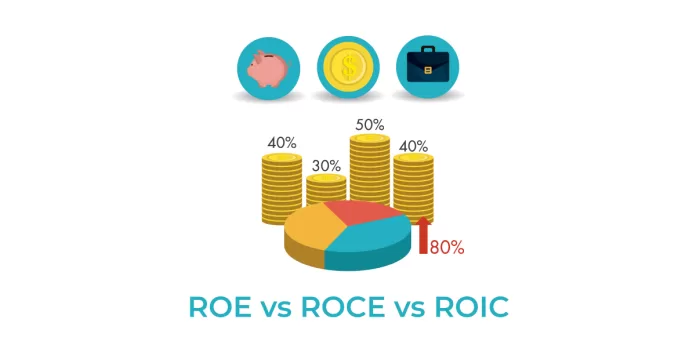Financial ratios are powerful tools that help investors and analysts evaluate a company’s performance and financial health. Three key ratios, Return on Equity (ROE), Return on Capital Employed (ROCE), and Return on Invested Capital (ROIC), provide valuable insights into a company’s profitability and efficiency.
Let’s explore these ratios and understand their unique characteristics and applications.
Return on Equity (ROE)
Meaning: ROE measures a company’s profitability and efficiency in generating profits from its shareholders’ equity. It indicates the return earned by shareholders on their investment in the company.
Formula: Net Income / Shareholders’ Equity
Use Case: ROE is best suited for companies where equity financing is dominant, such as those in the services, finance, or IT sectors. It helps shareholders and equity analysts assess how well their investments are performing in terms of net income generation.
Return on Capital Employed (ROCE)
Meaning: ROCE measures the profitability and efficiency of a company in generating returns from both its equity and debt capital.
Formula: EBIT / (Equity + Long-term Debt)
Use Case: ROCE is most suitable for comparing the performance of companies in capital-intensive sectors, like manufacturing or utilities. It is used by investors and analysts to assess companies where large investments in assets are common and financed from loans.
Return on Invested Capital (ROIC)
Meaning: ROIC provides insight into how effectively a company is using the money invested in it to generate profits. It helps investors determine the quality of management and their ability to generate a return on total capital.
Formula: NOPAT / (Equity + Long-term Debt – Cash)
Use Case: ROIC is suitable for evaluating companies that rely heavily on a combination of debt and equity for their operations. It gives a holistic view of how well all sources of capital are being used. ROIC is favoured by portfolio managers and strategic planners, especially when comparing companies with different financing structures.
Conclusion
Each of these ratios serves a specific purpose and is used in different contexts. ROE is ideal for assessing net income generation from shareholder equity, ROCE is suitable for capital-intensive sectors, and ROIC provides a holistic view of capital utilization. Understanding these ratios can help investors make informed decisions and evaluate companies effectively.
Disclaimer: This blog has been written exclusively for educational purposes. The securities mentioned are only examples and not recommendations. It is based on several secondary sources on the internet and is subject to changes. Please consult an expert before making related decisions.


